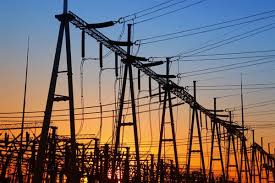Srinagar, July 24: Jammu and Kashmir has achieved a breakthrough in power availability, reducing its energy deficit from 18.8% in 2019–20 to a mere 0.1% in the first quarter of 2025–26.According to official data accessed by Rising Kashmir, between April and June 2025, J&K recorded an energy demand of 4,854 million units (MU), out of which only 6 MU went unserved, indicating that over 99.9% of the demand was successfully met. In contrast, in 2019–20, the shortfall stood at 2,683 MU out of a total demand of 14,258 MU, translating to an 18.8% deficit.The shift has been attributed primarily to the expansion and strengthening of the national transmission grid, which has enabled the seamless transfer of power from surplus regions to historically deficit areas like Jammu and Kashmir.As per data, the inter-regional transmission capacity has increased from 75,050 MW in 2016–17 to 1,20,340 MW by June 2025, with future projections aiming at 1,43,000 MW by 2027 and 1,68,000 MW by 2032.Jammu and Kashmir, with limited local generation options, currently has a total installed power capacity of 3,624.42 MW, which is entirely based on hydropower and renewable sources. Jammu and Kashmir, with limited local generation options, currently has a total installed power capacity of 3,624.42 MW, which is entirely based on hydropower and renewable sources. The absence of thermal or nuclear generation within the UT means that J&K continues to depend heavily on power allocations from central generating stations and inter-regional transfers.Officials familiar with the matter told Rising Kashmir that the improved power situation has led to a more stable supply during peak load conditions, reduced outages, and fewer emergency shutdowns. “The reliability of power in both Jammu and Kashmir divisions has substantially improved, especially during high-demand periods like summer in Jammu and winter in Kashmir,” an official said.However, despite the visible progress on the supply front, distribution-level challenges persist as the issues such as aggregate technical and commercial losses, transformer overloading, billing inefficiencies, and electricity theft continue to hamper equitable power distribution in several districts.“Addressing last-mile distribution bottlenecks is now the most urgent task. Without that, we risk underutilizing the capacity gains we’ve achieved through transmission reforms,” the official added.The official also said that narrowing power deficit could support the administration’s broader development agenda, including digital governance, smart metering, and the upcoming push for industrial investments under the New Industrial Policy.
In five years, J&K narrows power deficit from 18.8% to just 0.1%

Sign Up For Daily Newsletter
Be keep up! Get the latest breaking news delivered straight to your inbox.
By signing up, you agree to our Terms of Use and acknowledge the data practices in our Privacy Policy. You may unsubscribe at any time.
Leave a Comment Leave a Comment
Stay Connected
Latest News
Recent Posts
- LoP Sunil Sharma tours flood hit areas of Jammu, assures immediate relief
- BSF airlifts 47 Civilians from flood-hit village in Akhnoor
- “India kills us with tariffs”: Donald Trump again claims New Delhi offered “no tariff” deal
- Police safeguarding lives amid floods in Pulwama
- Police Conduct rescue operation in Flood-Prone areas in Awantipora







